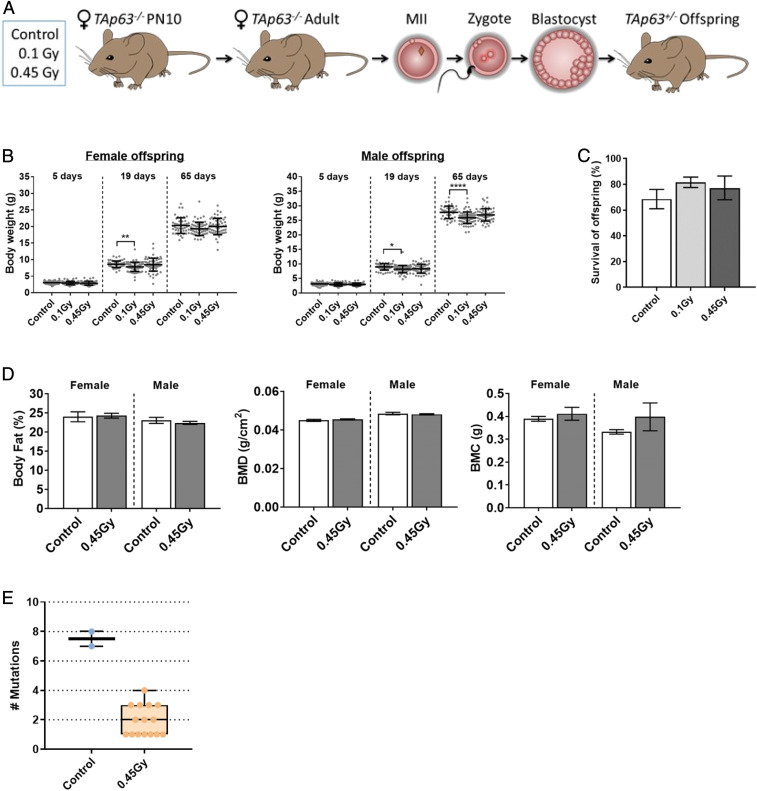Fig. 4.
Offspring from γ-irradiated TAp63−/− dams are healthy. (A) TAp63−/− mice were untreated or γ-irradiated at PN10. Adults were then mated with untreated WT males, and offspring health analyzed. (B) Weight of female and male offspring from control, 0.1 Gy, and 0.45 Gy TAp63−/− dams at 5, 19, and 65 d after birth. Dots represent weights for individual animals. Female/male n = 62/55, 62/74, 64/65 for control, 0.1 Gy, and 0.45 Gy. (C) Percentage of offspring from control, 0.1 Gy, and 0.45 Gy TAp63−/− dams that survive to 65 d (adulthood). (D) Percentage of fat, bone mineral density, and bone mineral composition were determined by DEXA in male and female offspring from control and 0.45-Gy TAp63−/− dams at 65 d. Female/male n = 19/40, 51/110 for control and 0.45 Gy. Data for B–D are expressed as mean ± SEM and analyzed by one-way ANOVA followed by Tukey’s post hoc test. *P < 0.05, **P < 0.005, ****P < 0.0001. No significant differences were observed in B and C. (E) The genomes of two offspring from unirradiated TAp63−/− control dams (n = 2) and 18 offspring from 0.45-Gy–treated TAp63−/− dams (n = 5) were sequenced. Box and whisker plots of mutations in the 1.4 Gbp assayed per animal are shown. TAp63+/− offspring from irradiated dams have a significantly lower mutation rate than controls (1.2 × 10−9 ± 0.44 × 10−9 vs. 5.2 × 10−9 ± 2.7 x10−9 P = 4.2 × 10−6 Poisson generalized linear model mutations ∼ genotype).

